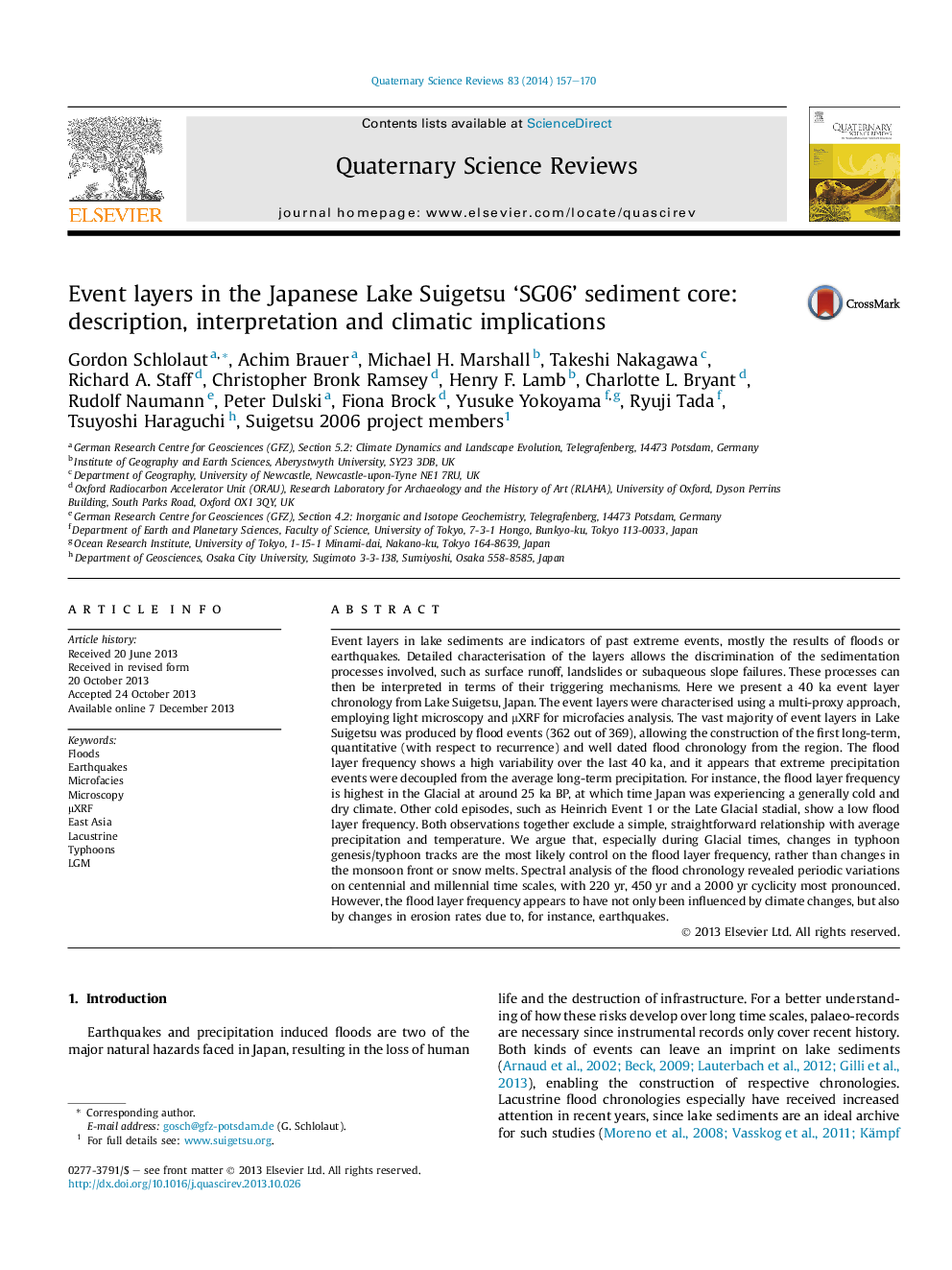| کد مقاله | کد نشریه | سال انتشار | مقاله انگلیسی | نسخه تمام متن |
|---|---|---|---|---|
| 6446614 | 1640851 | 2014 | 14 صفحه PDF | دانلود رایگان |
عنوان انگلیسی مقاله ISI
Event layers in the Japanese Lake Suigetsu 'SG06' sediment core: description, interpretation and climatic implications
دانلود مقاله + سفارش ترجمه
دانلود مقاله ISI انگلیسی
رایگان برای ایرانیان
کلمات کلیدی
موضوعات مرتبط
مهندسی و علوم پایه
علوم زمین و سیارات
زمین شناسی
پیش نمایش صفحه اول مقاله

چکیده انگلیسی
Event layers in lake sediments are indicators of past extreme events, mostly the results of floods or earthquakes. Detailed characterisation of the layers allows the discrimination of the sedimentation processes involved, such as surface runoff, landslides or subaqueous slope failures. These processes can then be interpreted in terms of their triggering mechanisms. Here we present a 40 ka event layer chronology from Lake Suigetsu, Japan. The event layers were characterised using a multi-proxy approach, employing light microscopy and μXRF for microfacies analysis. The vast majority of event layers in Lake Suigetsu was produced by flood events (362 out of 369), allowing the construction of the first long-term, quantitative (with respect to recurrence) and well dated flood chronology from the region. The flood layer frequency shows a high variability over the last 40 ka, and it appears that extreme precipitation events were decoupled from the average long-term precipitation. For instance, the flood layer frequency is highest in the Glacial at around 25 ka BP, at which time Japan was experiencing a generally cold and dry climate. Other cold episodes, such as Heinrich Event 1 or the Late Glacial stadial, show a low flood layer frequency. Both observations together exclude a simple, straightforward relationship with average precipitation and temperature. We argue that, especially during Glacial times, changes in typhoon genesis/typhoon tracks are the most likely control on the flood layer frequency, rather than changes in the monsoon front or snow melts. Spectral analysis of the flood chronology revealed periodic variations on centennial and millennial time scales, with 220 yr, 450 yr and a 2000 yr cyclicity most pronounced. However, the flood layer frequency appears to have not only been influenced by climate changes, but also by changes in erosion rates due to, for instance, earthquakes.
ناشر
Database: Elsevier - ScienceDirect (ساینس دایرکت)
Journal: Quaternary Science Reviews - Volume 83, 1 January 2014, Pages 157-170
Journal: Quaternary Science Reviews - Volume 83, 1 January 2014, Pages 157-170
نویسندگان
Gordon Schlolaut, Achim Brauer, Michael H. Marshall, Takeshi Nakagawa, Richard A. Staff, Christopher Bronk Ramsey, Henry F. Lamb, Charlotte L. Bryant, Rudolf Naumann, Peter Dulski, Fiona Brock, Yusuke Yokoyama, Ryuji Tada, Tsuyoshi Haraguchi,